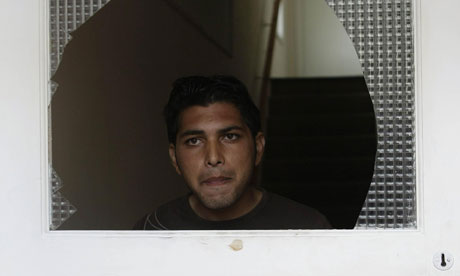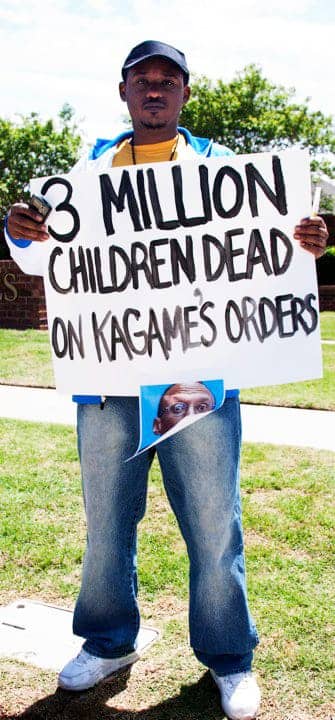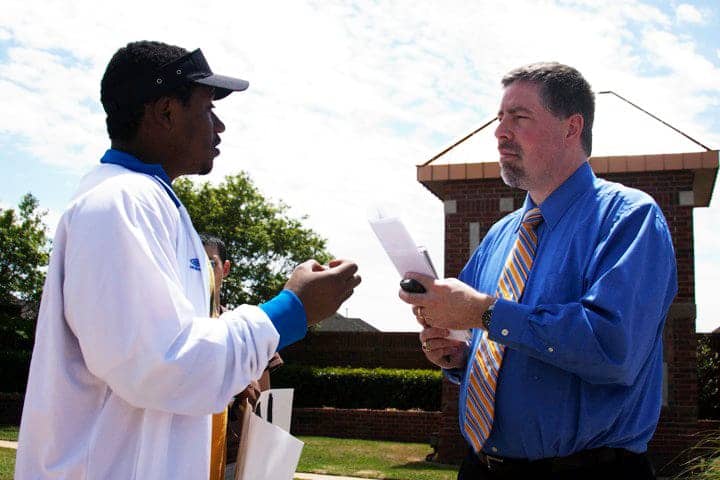 The embattled homeless encampment, in Nashville known as Tent City, which has escaped several shutdown notices from Metro police, was washed away by the floods earlier this month. Most escaped with little more than the clothes on their backs. Reginald "Vegas" Watson, 45, a member of the residents council that helped organize Tent City, told the Tennessean after the floods resided that the camp was uninhabitable.
The embattled homeless encampment, in Nashville known as Tent City, which has escaped several shutdown notices from Metro police, was washed away by the floods earlier this month. Most escaped with little more than the clothes on their backs. Reginald "Vegas" Watson, 45, a member of the residents council that helped organize Tent City, told the Tennessean after the floods resided that the camp was uninhabitable.The property is covered with diesel fuel from a nearby ruptured storage tank and waste from overturned portable toilets.
I don't recall mention of this on CNN.
The following is from Real Changes News.
Submerged beneath the consuming waters
via: The Contributor Newspaper, Nashville, Tennessee
In Tennessee’s recent historic floods, a thriving tent city gets washed away
When Ronnie Smith lost two jobs and a house four years ago, he was left with only one option: Nashville, Tennessee’s largest year-round shelter space, the Nashville Rescue Mission.
Having never been homeless before, Smith struggled to adjust to such a chaotic and crowded environment. When he was finally able to move into an abandoned house with a friend, he felt relieved. But when that friendship dissolved, Smith tried another option: a tent. He spent his evenings setting up camp anywhere he could, often threatened by strangers or told by police to “move along.”
Overcome with the realities of camping alone, Smith headed to the place he had hoped he’d never wind up: Nashville’s Tent City. Having heard bad stories of the city’s largest homeless encampment — drugs, theft, violence — Smith carried his belongings toward the riverside encampment with trepidation.
But when Smith arrived at Tent City in late 2009, he found little confirmation of those rumors. Instead, he discovered something he hadn’t been able to claim in his years on the street: a community. “People were real helpful. They’d even watch out for your stuff when you were gone,” says Smith, one of approximately 140 residents of the camp who, up until the morning of May 2, 2010 when floodwaters completely destroyed the camp, were grateful to be able to call Tent City home.
Before the flood
The Tent City that Smith encountered eight months ago was not the same Tent City that had existed on the banks of the Cumberland River for more than 20 years. Not only had its population grown in that time from a mere handful of residents to over 140, it had also changed from a well-kept secret to a widely-recognized reality, appearing in local newspapers, countless television news stories, a few documentaries and even The Wall Street Journal.
Tent City’s change in exposure goes back to 2006, when then-Mayor Bill Purcell announced that Nashville would begin raising the “quality of life” in its downtown area. To many, the campaign appeared concerned with improving the city’s pleasant feel. Unfortunately, a direct result of this public policy was the criminalization of homelessness in Nashville, and the city’s court and arrest records prove it.
As Tent City grew, so did the Nashville city government’s awareness of it. Police officers showed up at the camp in 2008 and posted notices that the camp would be shut down in a matter of weeks and would therefore need to be cleared of all belongings as soon as possible; anything left standing would be razed and anyone remaining would be arrested. And so, once again, homeless individuals were told to “move along.”
That is, until local churches, advocates and outreach workers stepped in. Offering to clean up the premises, along with paying for dumpsters, port-o-potties and showers — and all while promising to stand face-to-face with any bulldozer that might tear down tents and well-designed wooden homes — Tent City’s allies worked to change the camp’s fate. Their efforts paid off, when word came down from current Mayor Karl Dean that the camp would not be demolished.
Since then, despite occasional and somewhat subtle attempts by the city’s police department to reverse Mayor Dean’s order, Tent City has gone from being a homeless encampment perpetually on the verge of destruction to the closest thing Nashville has to an officially-sanctioned “transitional housing” site. In a city that promised 2,000 units of low-income housing five years ago and has drastically failed to follow through, a place like Tent City remains inevitable.
But because it had grown so rapidly on land owned by the Tennessee Department of Transportation, city officials had no choice but to put a timeline on relocating Tent City. To that end, in February of this year, the Metropolitan Homelessness Commission formed two subcommittees charged with locating an alternative site for the camp.
But, to the shock of its residents, it wasn’t the cold machinery of bulldozers that leveled Tent City; it was the unexpectedly volatile Cumberland River rising over its banks.
“It wasn’t all that unusual”
When Ronnie Smith arose Sun., May 2, to a small but steady stream of water running in front of his tent (a large tarp fastened over a wooden frame), he wasn’t terribly surprised. “It wasn’t all that unusual,” he says. “So I went back to sleep.” When he woke up 15 minutes later, however, with water halfway up his stack of two mattresses on top of two box springs, he began to worry. After a quick glance around his tent at his belongings floating like debris on the surface of the water, he grabbed the only dry items he had time to get: a t-shirt and a pair of shorts. When his feet hit the floor, the water was well above his waistline. Emerging from his tent, he started wading with other residents to higher ground.
One of those other residents was Ruth Simmons, a relative newcomer to Tent City. Waiting to receive word on her disability appeal, Simmons considered it a gift to be able to live there. “It was my home.” Even as the water rose, Simmons says, it didn’t quite sink in what, exactly, was happening. “I was kinda in denial.” Until she stepped outside her tent into waist-high water.
An hour or so later, residents began to gather together on higher ground where they met an outreach minister from a local church, who used a bus to transport residents to a Red Cross Shelter that had just been set up at Lipscomb University. The minister drove two busloads of residents — about 70 people and more than a dozen pets — to the university. Those Tent City residents and approximately 130 other people stayed at the university until May 18. Churches or friends offered most of the remaining Tent City residents temporary shelter. The rest straggled on the edges of the flooded camp until they found someplace else to go.
It had been nearly 100 years since Tennessee had seen anything close to the amount of rain that fell those first three days of May. Close to 18 inches of rain fell in some areas, leaving countless streams, rivers and waterways well above their capacity. Rescuers directed boats down the middle of roads that have never been underwater; homes and businesses were all but submerged; people hung onto trees and cars for dear life.
Ruth Simmons, holding back tears, says that she lost “everything:” her bed, a few bags of clothing, her personal identification, photos of her children and grandchildren. All of it now floats somewhere along the banks of the Cumberland River, while she strains her mind to figure out some way to start again.
The waters recede
For those living in Tent City the future remains especially uncertain. Metro has officially condemned the land on which Tent City stood for so many years; saturated with raw sewage, upturned port-o-potties, diesel fuel and other contaminants, it is no longer a place where humans can live in relative health and peace.
The immediate goal is to locate an alternate site for Tent City. Calls for land in the downtown vicinity have been sent throughout the city, but those calls have yet to be answered satisfactorily. Donations of tents and sleeping bags have, however, been plentiful. The long-term goal is to move the camp to a permanent location before the end of the year.
In the wake of the flood, many Tent City residents have received aid from the Federal Emergency Management Agency. In addition, a number of Tent City residents have been approved for Section 8 housing vouchers. As for the rest, some former Tent City residents have received hotel vouchers that will last for a few weeks, while others will take refuge inside the walls of a handful of area churches.
In the end, Nashville — with its churches, non-profits and government institutions — does not have to stand alongside the very poorest of its displaced flood victims. But there is the city’s slogan: “We Are Nashville.” If those words hold true, then the city’s doors — and its land — may be opened up as a Tent City for Ronnie Smith, Ruth Simmons and the others left with no place to go.








 Police say thousands of workers clashed with security forces at Ashulia
Police say thousands of workers clashed with security forces at Ashulia